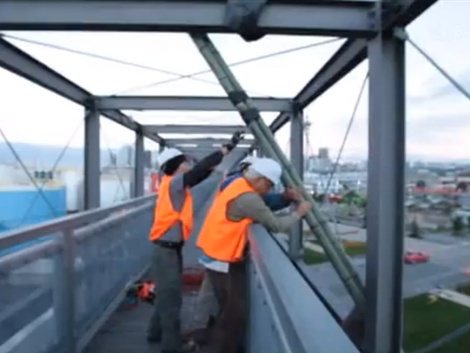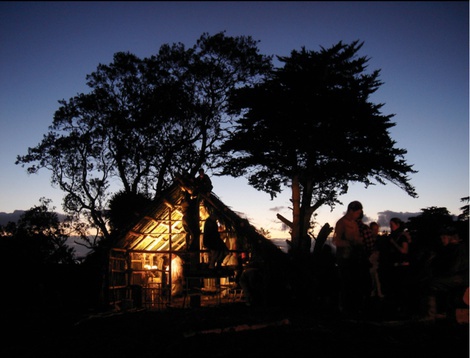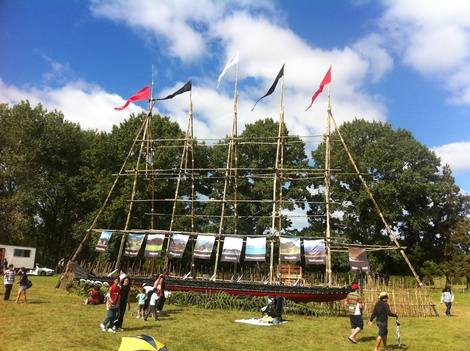The Lab was a joint project between the architecture and spatial design faculties of AUT University, The University of Auckland and UNITEC. These institutions worked alongside students, local academics, designers and architects to develop a series of two to three week-long interdisciplinary design projects.
Matariki Paparewa on Te Karere

Read more
Rau Hoskins and Carin Wilson co-head Te Hononga - The Centre for Maori Architecture and Appropriate

Read more
Project Context


Read more
Student outcomes I – David Duan
The Ideal Home(land) studio is wrapping up and while the student’s final outcomes have been developed individually, there are many common features among the designs such as shared libraries and productive gardens. But despite these recurring elements, there’s also a lot of variety in the way the site and brief were approached, with each student’s personal ideals beginning to show through.
Designing for higher density means designing for a greater number of people living in a smaller area, and so the students are designing the way that these residents will relate and interact with one another – designing a sort of social landscape which is shaped by the physical structures.
Understanding that at different times people want to interact with the landscape in different ways, David Duan‘s proposal has a number of openings onto smaller outdoor spaces, as well as a shared, larger courtyard. Combined with the form of the buildings and their detailing, these are small scale, private, and thoughtful spaces. Scattered around the building, these are cleverly arranged so that residents are never too far from an outdoor space.
These are well-defined little terraced areas which open out, and because of the way they peek out from the shelter of the building, they can still be used when the weather is a little drizzly. This is a key consideration with Auckland’s mild climate but temperamental weather.
The next two posts will look at some more student proposals, highlighting the range of ideas generated in the Ideal Home(land) studio.
By Emma Ng
Student outcomes II – WooMin Lee
WooMin Lee really looked at this project with an emphasis on designing a social landscape, interested in connecting up the smaller spaces to increase the number of social interactions across the building.
Tackling the idea of subdivision at its root (dividing space into smaller and smaller spaces), WooMin’s proposal attempted to connect these spaces, particularly through access routes. The hope is that the architecture encourages a flow of people through the spaces, in turn offering the residents of the site opportunities to meet and interact as they go about their day.
The design is made up of four houses, multi-storied and one on each corner of the site. The buildings are connected by an elevated bridge structure, and the functions that the building offers are broken down into three sort of ‘sharing zones’ – the residential, the communal, and the neighbourhood. Communal building facilities such as a laundry and daycare are on the first floor all accessible via the bridge. The ground floor is designed to cater for not only the residents of the site, but to bring in the neighbourhood. The buildings open out onto a central courtyard, providing outdoor space, and also house ‘neighbourhood’ scale things like a café.
The building therefore not only encourages circulation of the residents around the site, but the circulation people around the neighbourhood. This sort of social landscape understands that part of creating an efficient building is encouraging the use of every single part of the space, and encouraging a lot of movement around the building is a step towards this.
WooMin’s proposal also presents itself as a kind of ‘new villa model’ – just as the suburb is currently populated by many variations of the villa which gives the street a certain unity through variations on the one model, WooMin also considers the possibility that her building could be a model for other sites in the suburb, with slight variations. In terms of housing affordability too, this could be an effective way to design and build for affordable higher density, avoiding the higher costs of one-off bespoke architecture.
With the neighbourhood level spaces on the ground floor, one can imagine the circulation of people around several such buildings in the street with each site offering a different mix of businesses and services. What this proposal offers is a halfway step – a design which steps cautiously toward higher density housing, carefully considering its social implications and opportunities.
By Emma Ng

